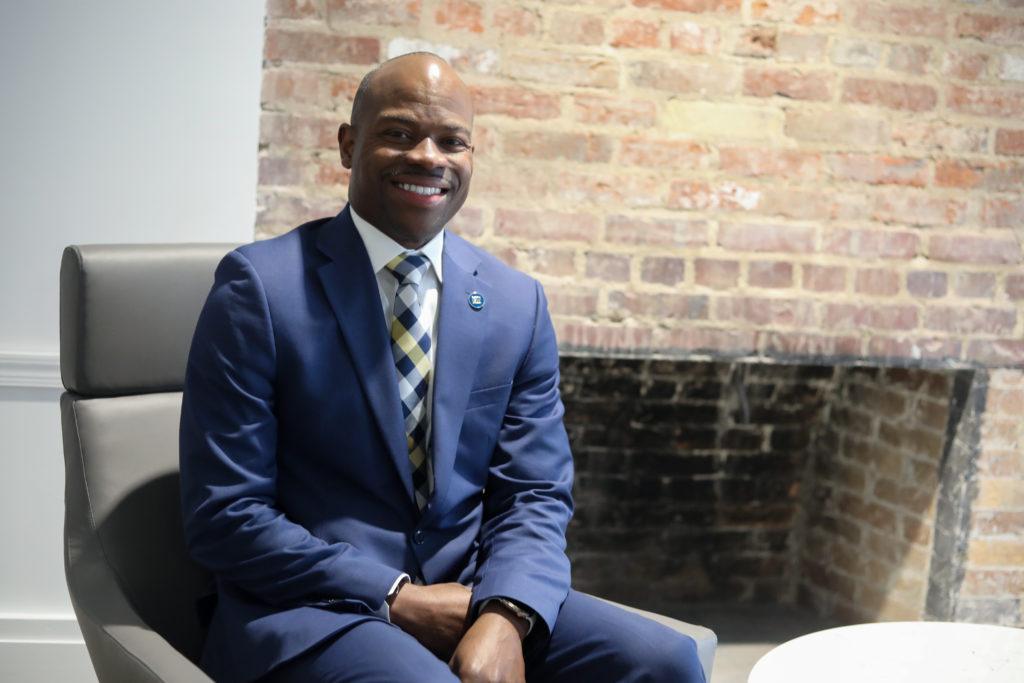The University’s pod model for research will facilitate collaboration and teamwork between GW’s researchers, experts said.
Officials announced the switch to the pod model – which organizes schools into research groups by subject matter – earlier this month, saying the new structure will consolidate projects and equip pods with staff members to lead the process of creating grant models. Experts in academic research said the new model may allow researchers to share equipment that they previously would have needed to purchase individually and increase communication between faculty studying similar topics.
Provost Brian Blake said officials decided to implement the pod model after hearing feedback from the Faculty Senate’s working group on research that the Office for the Vice President for Research needed to cut costs and increase efficiency in workflow.
“Most faculty and staff appreciate the principles behind the structure and how it could potentially address some of the challenges in the research operations,” he said in an email. “Although the provost’s office led a four-week working group, I appreciate that during the pandemic faculty are concerned about the timing of the change.”
Blake said Pod 1 will consist of the Columbian College of Arts and Sciences, Elliott School of International Affairs, School of Business and Graduate School of Education and Human Development, and Pod 2 will consist of the Milken Institute School of Public Health and the Biostatistics Center.
The School of Medicine and Health Sciences, the School of Engineering and Applied Science and the School of Nursing will make up Pod 3, Blake said.
Blake said he will work directly with “senior leaders” within OVPR to maintain research operations following former Vice President for Research Robert Miller’s transition to his role as interim vice dean for research and academic affairs at the medical school. He said officials will search for someone to fill the vice president for research position when officials have a clearer understanding of how the pandemic will impact the University.
“There will be some new efficiencies in our operations associated with the change to the pod structures that will lead to layoffs,” Blake said. “These actions will help to reduce the overall general financial reductions that we originally needed to balance the budget.”
Faculty members criticized the new changes at this month’s Faculty Senate meeting, saying that the original system was effective and the pod system will actually further centralize University research by grouping schools together.
Edward Hackett, the vice provost for research at Brandeis University, said the new model could provide workers with an improved sense of teamwork because the same people who develop a proposal will be involved in the process from start to finish, increasing worker satisfaction. He said assigning workers multiple tasks within a project increases productivity and satisfaction because they can develop new skills while working toward a common goal.
“If a pre-award person can learn some of the post-award stuff, the learner benefits because he or she’s getting some skill development,” he said. “The University benefits because now you’ve got a backup if you need it. If you’re really under the gun, this person knows something about what the job requires.”
Hackett said hiring staff members with a background in the grant proposal process and who keep a research team on track with deadlines is critical for a successful research project because drafting and submitting grant proposals can be confusing and stressful.
“You need people who have detailed knowledge, who can work under pressure,” he said. “Because these things have a time deadline for a really big proposal, faculty will always go right up to the deadline.”
Terry Davidson, the director of the Center for Neuroscience and Behavior at American University, said the pod model could allow researchers to share expensive equipment for different projects.
He said universities traditionally separated research projects into “silos” in which researchers wouldn’t collaborate with people outside of their department, and many universities are now moving toward an interdisciplinary approach.
“You would take somebody from biology and somebody from chemistry and somebody from psychology and maybe neuroscience and those people would find common ground on topics like dementia or obesity or drug addiction,” Davidson said.








